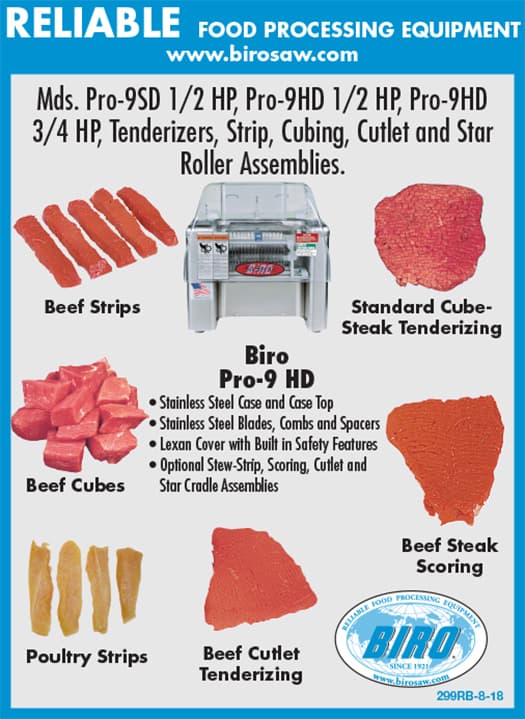x-ray & Metal detection
product focus
metal detection technology
Moving toward
During the pandemic, many independent processors have seen their production demands increase due to changing consumer purchasing patterns as the labor market remains tight. In turn, many smaller processors have added new automated equipment, such as bigger injectors or poly-clip systems, to keep up with production demands. These processors need to be very aware that they have introduced a metal contamination source, says Terry Houser, associate professor and Smithfield Foods chair in meat science extension at Iowa State University in Ames. With every equipment change and automation advancement, it begs the question: “Are you introducing any metals?” he says.
While preventative maintenance and management is required from processors through HACCP plans and SOPs to make sure metal doesn’t get into product, metal detection equipment has become an important intervention in preventing metal contamination as the industry still struggles with fairly untrained staff.
If processors have a HACCP plan, and their in-plant data suggests that they don’t have a problem with metal, then many processors probably won’t add metal detection equipment, Houser says. Now, if a processor has a problem with metal detection — say a recall occurs — the U.S. Department of Agriculture or a state agency would require the processor to address metal detection in its HACCP plan. In turn, many smaller processors don’t deal with metal detection until an issue occurs, Houser says.
Now, with many smaller independent processors growing, metal detection systems may be in their futures. For example, to comply with Food Safety Modernization Act requirements for removing foreign material, some independent meat and poultry processors are adding metal detection equipment to examine the finished product package or as close to the end of their process as possible, says Donna Schaffner, associate director of food safety, quality assurance and training at Rutgers University, Bridgeton, N.J.
It's not surprising that one of the barriers for more smaller processors to use metal detection and even x-ray technology is the cost.
“The first obstacle is getting owners/operators to understand that the capital expenditure for expensive detection equipment is not a large amount of money, compared to the cost of one lawsuit from a consumer who says they were injured by that company’s product,” Schaffner says.
Some processors also hold the belief that they don’t have problems with foreign material, because they never get customer complaints about it. Schaffner says they are just fooling themselves.
By Elizabeth Fuhrman
Of course, metal detection systems cannot detect all foreign materials. In turn, the top challenges for smaller and independent processors are very small shards of glass, which are virtually non-detectable, Schaffner says. Additionally, non-metallic foreign materials that are too close in density to that of the product for x-ray to differentiate are a challenge. As far as false rejects for processors using x-ray or metal detection equipment, the magnitude of the problem depends on the protein material, if it’s partially frozen or if too much variation in densities in a mixed-type material exists.
“There are better machines out there that do a better job, but they are more expensive than many small companies want to pay,” Schaffner says.
Metal detection also must be set up for certain thicknesses.
“Many small processors make so many different products that it would be somewhat difficult to standardize the detection process,” Houser explains. In turn, it might require processors to standardize their products or limit the size of the product or the package.
Additionally, the maintenance support that metal detection equipment would need is probably lacking for many small facilities, Houser adds. Still, the benefits of metal detection include the peace of mind that a processor has more control over its process, he says.

